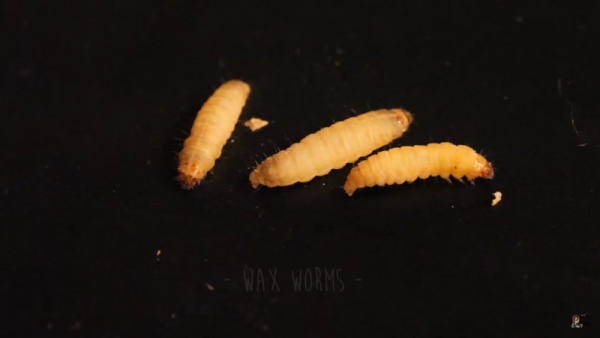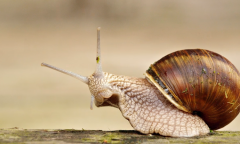By KM Diaz, | April 25, 2017

One hundred wax worms were exposed in plastic bags. After 40 minutes, holes started to appear, and the quantity of the plastic lessened by 92 mg after 12 hours. (YouTube)
A specific type of caterpillar has been found to have the ability to biodegrade polyethylene, which form a large percentage of the trash at landfill sites. Scientists suggest that the worm could be a solution to plastic pollution.
The wax worm - the larvae of the insect Galleria mellonella - is a parasite of beehives across Europe. The worms attack bee colonies in the wild. They lay eggs inside the hives for worms to spread on beeswax.
Like Us on Facebook
Amateur beekeeper Federica Bertocchini from Institute of Biomedicine and Biotechnology of Cantabria (CSIC), Spain, recognized the ability of wax worms while removing them from honeycombs. She temporarily stored the worms in a usual plastic shopping bag which later on appeared to have some holes.
Bertocchini, together with Christopher Howe and Paolo Bombelli at the University of Cambridge's Department of Biochemistry, conducted a timed experiment. One hundred wax worms were placed in plastic bags. After 40 minutes, holes started to appear, and the quantity of the plastic lessened by 92 mg after 12 hours.
The scientists noted that the degradation rate is very fast compared to other discoveries, like a bacteria identified last year which can biodegrade plastics at a rate of 0.13mg per day. Bombelli says the discovery could improve the environment by eliminating polyethylene plastic waste stored in oceans and landfill sites. Polyethylene is commonly used in packaging, and makes up at least 40 percent of total demand for plastic products in Europe.
Plastics are resistant to breaking down, but the wax worms could be the answer to reducing plastic pollution. The beeswax on which wax worms lay their eggs is made up of a distinct mixture of lipid compounds - building block molecules such as oils, fats, and hormones.
The researchers conducted spectroscopic analysis to determine the chemical bonds in the plastic. They found that the worms turned polyethylene into ethylene glycol - unbonded 'monomer' molecules. To prove that the process is not simply chewing, they crushed some polyethylene bags and spread them among the worms, and still got the same results.
According to Bombelli, the caterpillars are not just eating the plastic, but altering its chemical makeup. The polymer series in polyethylene plastic are destroyed by wax worms. The caterpillar creates something, possibly from the symbiotic bacteria in its gut or salivary glands, which breaks down the chemical bonds in polyethylene.
The next step for researchers is to distinguish the molecular methods in the reaction to see if they can isolate the enzyme responsible.
-
Use of Coronavirus Pandemic Drones Raises Privacy Concerns: Drones Spread Fear, Local Officials Say

-
Coronavirus Hampers The Delivery Of Lockheed Martin F-35 Stealth Fighters For 2020

-
Instagram Speeds Up Plans to Add Account Memorialization Feature Due to COVID-19 Deaths

-
NASA: Perseverance Plans to Bring 'Mars Rock' to Earth in 2031

-
600 Dead And 3,000 In The Hospital as Iranians Believed Drinking High-Concentrations of Alcohol Can Cure The Coronavirus

-
600 Dead And 3,000 In The Hospital as Iranians Believed Drinking High-Concentrations of Alcohol Can Cure The Coronavirus

-
COVID-19: Doctors, Nurses Use Virtual Reality to Learn New Skills in Treating Coronavirus Patients












